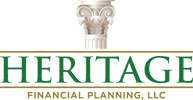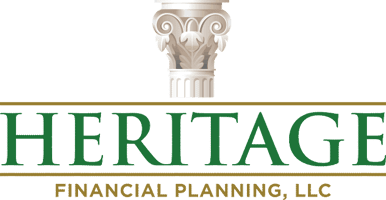After all of those years of saving, investing, and planning it’s finally time to retire. But what is it that those who successfully planned for the long term do to ensure their funds last for the duration of their retirement?
We like to suggest that future retirees consider these three strategies.
- Sacrifice current consumption for future comfort.
It is quite easy to spend our resources too freely. We Americans love our “stuff.” One strategy that is a sure winner is to stave off some of our consumption and start saving as soon as possible for retirement. The concept of compounding is something most young adults aren’t aware of, and if truth be told, most of us feel there is time to start to save later on in life. Even if the savings are modest, start as early on as possible. It’s a good habit to get into, and compounding can significantly grow our retirement assets.
Falling into the consumption trap can kill anyone’s chances to make it through retirement. It’s tough enough to save what’s needed for retirement. Poor spending habits are a key factor. Those trying to save enough to retire would be wise to remember that their future selves will appreciate their restraint in their younger years. It’s a simple concept, but often hard to execute. It requires discipline and a long-term focus on one’s goals. Have a budget, take a few less vacations, have a few less dinners out per month, only spend on possessions when necessary, and most important, never spend above what your budget allows.
The savings from that one scarified vacation, dinner, and new pair of shoes invested for growth in a tax-sheltered account will pay for a multiple of such expenditures in retirement. For example, a nice pair of shoes, new outfit and a nice dinner out will cost you in the range of $500. If that amount were invested for 30 years at a reasonable growth rate of 6% that would amount to $2,871 in future dollars. That’s plenty for several nice evenings out in retirement.
- Avoid the debt trap.
Since the Great Recession of 2008, most people are more aware of just how devastating carrying too much debt at the wrong time can be. That being said, it is still all too common to see someone 10 years out from retirement carrying a mortgage liability that will not be paid off anytime soon. This can substantially increase the annual drawdown on investment and retirement assets, creating a higher likelihood of outliving one’s assets. The same holds true for credit card and car debt. It is a better strategy to focus on a debt-payoff program many years in advance of retirement, so it does not become a significant risk factor during retirement.
- Invest with purpose.
We have found the strongest approach to investing is to research and secure references for a successful goals-based investment adviser. The focus of this type of investor is do a bit of “futuristic visioning” to help set realistic goals for wealth accumulation by the time the investor reaches retirement age.
It is all too common for a client to meet with an adviser and concentrate the conversation on certain narrowly focused objectives, such as how a 401(k) rollover will be invested. An adviser might suggest 70/30 stocks to bonds as the way to go based on a client’s risk tolerance. Often the client says OK all too quickly. This is a backward approach as the real question from the client should be, “How much risk do I need to take to achieve my goals?”
Advisers who do not offer comprehensive, goals-based planning advice have no way of knowing the answer to that question. Proper investment recommendations should be based on a compressive analysis of each client’s spending habits, other sources of expected retirement income, Social Security benefits analysis, and any expected inheritance.
Sometimes people get so wrapped up in making money they forget about risk management, which is what goals-based investing helps the client and adviser focus on for the long term. Everyone needs to focus on creating enough of a nest egg in retirement so that the “drawdown” amount in retirement is sustainable. It needs to be, and is, absolutely quantifiable. If a client is wealthy, has many sources of expected income outside of retirement assets, and has a mother with millions in the bank, then that drawdown number will be low. If the drawdown number is low the risk profile of the recommended investment strategy must be rather conservative to avoid unnecessary losses of his or her investment capital. If you are not going to have all of the resources available from the previous example, then a much more aggressive risk profile may be necessary. At least you will understand why, instead of feeling like the adviser is simply shooting from the hip.
Set your goals, find your number, and stick to that risk profile no matter what, even if your natural inclination is to take greater risks to increase investment returns. Resist this. It’s not just about making money. If simply making money is the focus, there really is no plan to protect you for retirement. In short, select a competent investment professional to help.
Summary of Strategies to Assure a Successful Retirement
Not planning carefully for retirement is a bit like going to the craps table in Las Vegas. By not crafting a clear plan you will never be sure of a sound retirement and will most likely not have one. Investors need to hire a highly qualified investment manager who uses goals-based strategies. Consider starting to plan and invest so that you can take advantage of the amazing outcome yields from compounded investment returns. And the obvious strategy of not getting involved in overconsumption is a strong habit to get into as early as possible in life.
If planning hasn’t been a part of your financial life, then get started now with Heritage Financial Planning. You can still make serious inroads into preparing for a successful financial retirement.
In fact, our S.T.A.R. process walks you through every step those nearing retirement or already in retirement need to consider and prepare for to safeguard their financial future.
Click here to learn more about our HFP STAR Strategy process.
You’ve worked so hard to get you where you are today, and with all the changes taking place in our world these days, let your next step be your best step in preparing for the rest of your financial life. Get your custom-designed S.T.A.R. Strategy Plan now! Give us a call at our office at (574) 606-4406.
Source:
Copyright © 2021 The Kiplinger Washington Editors. All rights reserved. Distributed by Financial Media Exchange.













